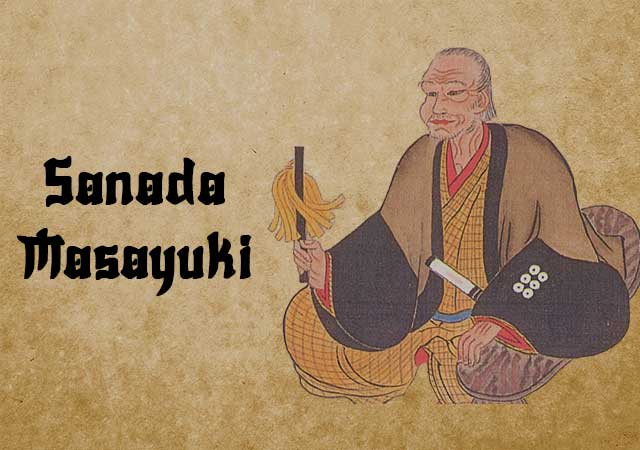
Sanada Masayuki (1547 – July 13, 1611) was a daimyo and prominent lord of Japan's Sengoku period. Head of the Sanada clan from Shinano Province, he served the powerful Takeda clan of Kai Province alongside his father and brothers during Takeda Shingen’s leadership. Following the Takeda clan's decline, Masayuki took charge of the Sanada, and despite limited resources, he established his clan as an independent power under the Toyotomi regime by navigating alliances with dominant clans such as the Tokugawa, Hojo, and Uesugi. Renowned as one of his era's greatest strategists, Masayuki achieved notable victories against the Tokugawa forces in the Battle of Kami River and the Siege of Ueda.
Born the third son of Sanada Yukitaka in 1547, Masayuki was initially ineligible to inherit his father's position due to his elder brothers, Nobutsuna and Masateru. At the age of seven, he was sent as a hostage to the Takeda headquarters in Kai Province, where he became part of the Okukinjushu—a select group of trusted young attendants close to Takeda Shingen. According to the Koyo Gunkan, Shingen quickly recognized Masayuki’s talents, which rivaled those of his father, Yukitaka, and included him among his Twenty-Four Generals, along with Yukitaka and his brothers.
In 1558, he was adopted by the Muto family, a branch of the Oi clan and relatives of Shingen’s mother, taking on the name Muto Kihei.
Service under the Takeda Clan
Around 1564, Sanada Masayuki married Yamanote-dono, the daughter of Uda Yoritada, a local lord from Totomi Province. While serving the Takeda clan, Masayuki participated in several pivotal battles, including the Fourth Battle of Kawanakajima in 1561 and the Battle of Mimasetoge in 1569. In 1572, he joined Takeda Shingen in a campaign toward Kyoto against the Oda and Tokugawa clans, participating in the Battle of Mikatagahara (1573).
Following Shingen’s death in 1573, Masayuki continued to serve Shingen’s successor, Takeda Katsuyori. The next year, Masayuki’s father, Yukitaka, passed away, leaving Masayuki's older brother Nobutsuna as clan head. However, both Nobutsuna and his other brother Masateru were killed in the disastrous Battle of Nagashino (1575) against the Oda. With his brothers gone, Masayuki claimed leadership of the Sanada clan, a position Takeda Katsuyori endorsed, reportedly with the support of Kosaka Masanobu, a Takeda chief retainer.
In 1579, an alliance was forged between the Takeda and Uesugi clans following Uesugi Kenshin’s death. Under Katsuyori’s orders, Masayuki invaded western Kozuke, a Hojo-controlled area, capturing Numata Castle and securing it for the Takeda. In 1581, he was appointed Awa-no-kami (Governor of Awa) and oversaw the construction of Shinpu Castle. When Numata Kageyoshi, the former lord of Numata Castle, attempted to reclaim it, Masayuki thwarted him with a successful assassination plot.
In April 1582, combined forces from the Oda and Tokugawa clans launched an invasion into Takeda territory. Masayuki proposed that Katsuyori seek refuge in the Sanada domain at Iwabitsu Castle, but Katsuyori chose to flee to Iwadono Castle, where he was betrayed and met his end at Tenmokuzan. After the Takeda clan’s collapse, Masayuki submitted to Oda Nobunaga, who allowed him to retain most of his lands under Takigawa Kazumasu’s command, though he had to cede Numata Castle to Takigawa’s relative.
The Tensho-Jingo Conflict
Following Nobunaga’s death at the Incident at Honno-ji on June 21, 1582, chaos erupted as Oda control over former Takeda territories weakened. Amid this turmoil, Tokugawa Ieyasu moved into Kai and Shinano Provinces, supported by senior Oda vassals, aiming to solidify his power. However, the Uesugi and Hojo clans also laid claim to these regions, where remnants of former Takeda-aligned clans held sway. The resulting power struggle between the Tokugawa, Uesugi, and Hojo clans is known as the Tensho-Jingo Conflict.
On June 13, the Hojo clan captured Iwadono Castle in Tsuru District and enlisted local magnate Watanabe Shozaemon to support their conquest. Masayuki, initially aligned with the Uesugi, shifted his allegiance to the Hojo on July 9 and surrendered to Hojo Ujinao. Meanwhile, on July 5, Takigawa Kazumasu suffered a severe defeat against the Hojo at the Battle of Kannagawa. Masayuki escorted Kazumasu’s remaining forces back through Suwa, then seized the opportunity to retake Numata Castle with the help of his uncle Yazawa Yoritsuna and installed his son, Nobuyuki, as the commander of Iwabitsu Castle, strengthening Sanada presence in eastern Kozuke.
In July, Uesugi Kagekatsu invaded northern Shinano, leading Masayuki to ally temporarily with the Uesugi before switching back to the Hojo. Both armies met at Kawanakajima on July 30 but avoided direct combat when the Hojo forces redirected their efforts south to Kai Province, which the Tokugawa were simultaneously invading. Meanwhile, a rebellion by Shibata Shigeie, a Uesugi retainer, forced the Uesugi forces to retreat from northern Shinano.
On October 19, Masayuki abruptly changed his allegiance to the Tokugawa, attacking Nezu Masatsuna, a Hojo lieutenant, and coordinating with Yoda Nobushige to resist Hojo forces near Komoro, following orders from Ieyasu. The Hojo, learning of Masayuki’s defection, attempted to capture Numata Castle, but Masayuki successfully defended his position.
Conflict with the Tokugawa
In 1583, Sanada Masayuki began constructing Ueda Castle and its surrounding town, establishing it as the Sanada clan’s primary stronghold. In 1584, while Tokugawa Ieyasu marched west to engage Hashiba Hideyoshi in the Battle of Komaki and Nagakute, Masayuki remained in northern Shinano to monitor the Uesugi clan. He used this opportunity to consolidate power in the region by subjugating nearby landowners. When Ieyasu made peace with Hideyoshi later that year, he faced pressure from Hojo Ujinao to transfer Numata Castle to the Hojo per their treaty.
By April 1585, Ieyasu’s forces had advanced into Kai Province to pressure Masayuki to relinquish Numata Castle. Unwilling to part with the hard-won territory, Masayuki severed ties with Ieyasu and allied with Hideyoshi by sending his second son, Nobushige, as a hostage to the Uesugi clan. In retaliation, Ieyasu’s forces attacked the Sanada domain in northern Shinano, besieging Ueda Castle with 7,000 soldiers. Masayuki, with only 1,200 defenders, inflicted severe losses on the Tokugawa forces in what became known as the First Battle of Ueda Castle, significantly enhancing his reputation as a military strategist. Meanwhile, Hojo forces also attacked Numata Castle but were repelled.
In 1586, Ieyasu, now reconciled with Hideyoshi, was given permission to attack Masayuki due to the latter’s failure to send family hostages to signify his submission. Masayuki quickly requested mediation from Uesugi Kagekatsu, offering to formally surrender to the Toyotomi clan. Hideyoshi ordered Ieyasu to withdraw, and Masayuki later traveled to Kyoto to pledge allegiance directly to Hideyoshi. After his victory over the Tokugawa, Masayuki became a vassal to Hideyoshi, sending his son Nobushige as a hostage to Osaka. That same year, Hojo forces made another unsuccessful attempt to capture Numata Castle. In 1589, Hideyoshi mediated the longstanding dispute between the Sanada and Hojo clans over Numata, awarding Numata Castle to the Hojo in exchange for land in southern Shinano for the Sanada.
Despite the settlement, tensions resurfaced when Hojo retainer Inomata Kuninori attacked Nagurumi Castle, violating Hideyoshi’s prohibition against private conflicts among daimyos. This incident contributed to Hideyoshi’s decision to launch the Siege of Odawara in 1590, leading to the eventual fall of the Hojo clan.
Following Hideyoshi’s death in 1598, Masayuki sided with Ishida Mitsunari during the Battle of Sekigahara. He sent his eldest son, Nobuyuki, to join the eastern forces, while he and his younger son, Nobushige, fought for the western alliance, a strategic move to secure the Sanada clan’s future. At Ueda Castle, Masayuki’s 2,000 soldiers held off Tokugawa Hidetada’s 38,000-strong army in the Second Battle of Ueda Castle, delaying them enough to prevent their timely arrival at Sekigahara. Although Mitsunari’s side ultimately lost, Masayuki’s foresight saved his family; rather than being executed, he and Nobushige were exiled to Kudoyama in Kii Province, thanks to Nobuyuki’s loyalty to the Tokugawa.
Exile and Legacy
In exile, Masayuki received support from Nobuyuki and from various local sources, including the Kii Domain’s lord Asano Nagaakira. Historical records indicate that Masayuki’s financial struggles were alleviated through aid from nearby temples and nobles, including an annual grant of 50 koku from Asano Nagaakira and donations from Shinkoji Temple.
Though he never amassed vast territories like other daimyos, Masayuki is remembered as a brilliant strategist adept at navigating the turbulent political landscape of his time. While Toyotomi Hideyoshi reportedly viewed Masayuki as untrustworthy due to his shifting allegiances, these very maneuvers ensured the Sanada clan’s survival. Since the Edo period, Masayuki’s reputation has been celebrated, recognizing his resilience and strategic prowess in preserving his family’s legacy amidst Japan’s warring clans.
See also
-
Yamagata Masakage
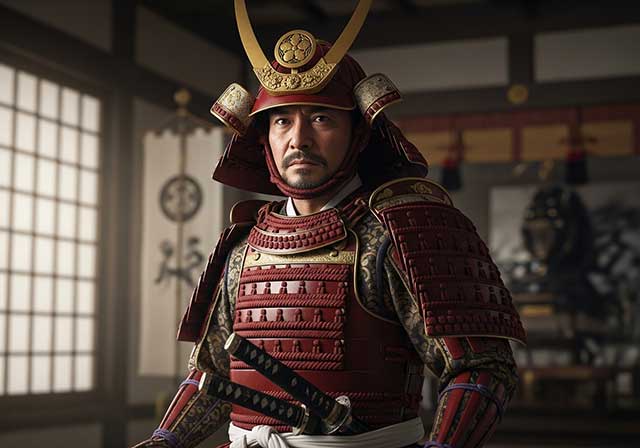
Masakage was one of Takeda Shingen’s most loyal and capable commanders. He was included in the famous list of the “Twenty-Four Generals of Takeda Shingen” and also belonged to the inner circle of four especially trusted warlords known as the Shitennō.
-
Yagyu Munenori
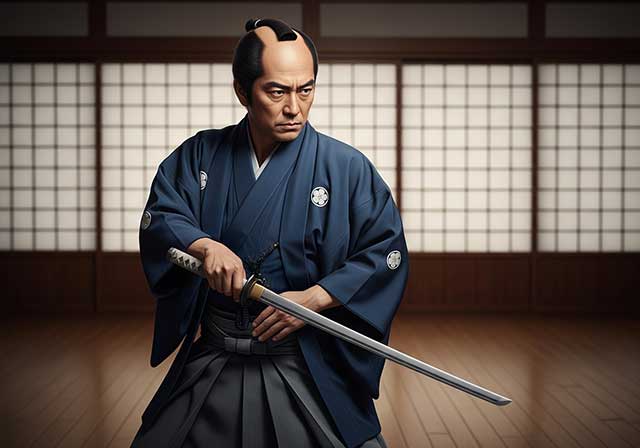
Yagyū Munenori began his service under Tokugawa Ieyasu while his father, Yagyū Muneyoshi, was still at his side. In 1600, Munenori took part in the decisive Battle of Sekigahara. As early as 1601, he was appointed a kenjutsu instructor to Tokugawa Hidetada, Ieyasu’s son, who later became the second shogun of the Tokugawa clan.
-
Yagyu Muneyoshi
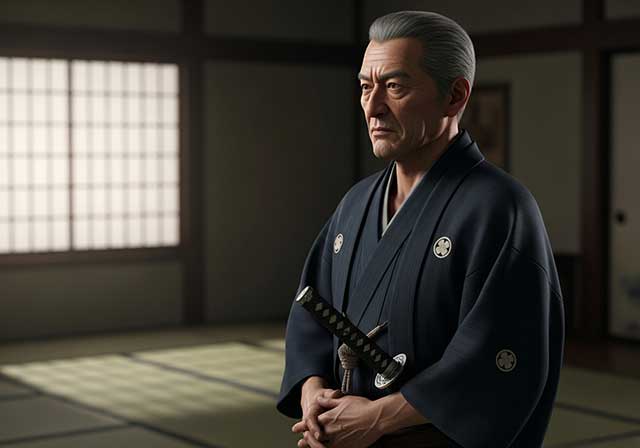
A samurai from Yamato Province, he was born into a family that had been defeated in its struggle against the Tsutsui clan. Muneyoshi first took part in battle at the age of sixteen. Due to circumstances beyond his control, he was forced to enter the service of the Tsutsui house and later served Miyoshi Tōkei. He subsequently came under the command of Matsunaga Hisahide and in time became a vassal first of Oda and later of Toyotomi.
-
Endo Naozune
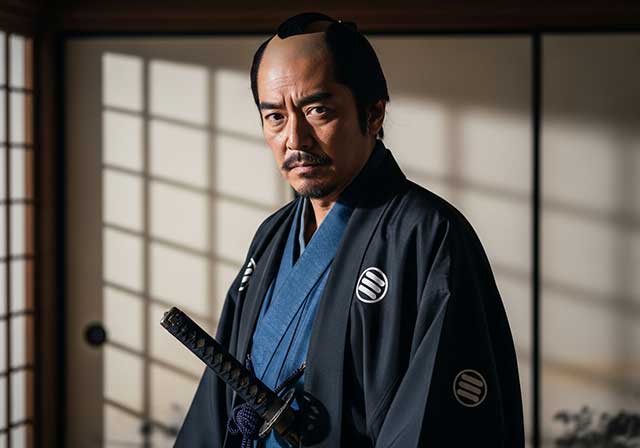
Naozune served under Azai Nagamasa and was one of the clan’s leading vassals, renowned for his bravery and determination. He accompanied Nagamasa during his first meeting with Oda Nobunaga and at that time asked for permission to kill Nobunaga, fearing him as an extremely dangerous man; however, Nagamasa did not grant this request.
-
Hosokawa Sumimoto
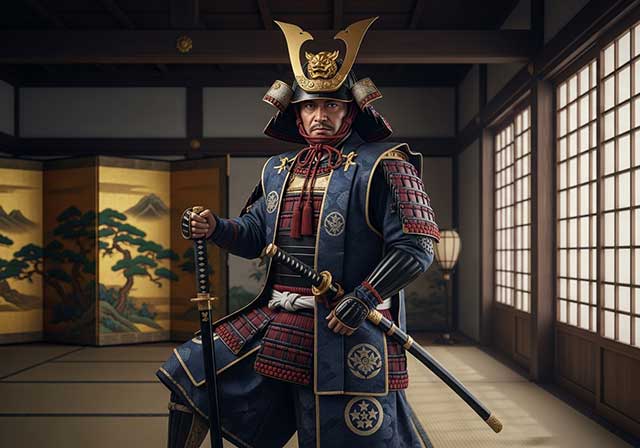
Sumimoto came from the Hosokawa clan: he was the biological son of Hosokawa Yoshiharu and at the same time the adopted son of Hosokawa Masamoto, the heir of Hosokawa Katsumoto, one of the principal instigators of the Ōnin War. Masamoto was homosexual, never married, and had no children of his own. At first he adopted Sumiyuki, a scion of the aristocratic Kujō family, but this choice provoked dissatisfaction and sharp criticism from the senior vassals of the Hosokawa house. As a result, Masamoto changed his decision and proclaimed Sumimoto as his heir, a representative of a collateral branch of the Hosokawa clan that had long been based in Awa Province on the island of Shikoku. Almost immediately after this, the boy became entangled in a complex and bitter web of political intrigue.
-
Honda Masanobu
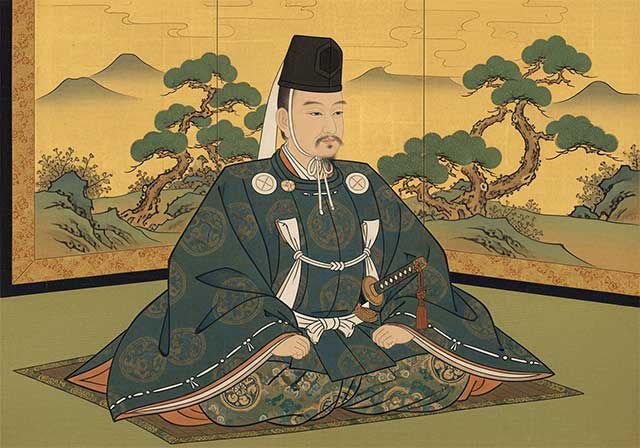
Masanobu initially belonged to the retinue of Tokugawa Ieyasu, but later entered the service of Sakai Shōgen, a daimyo and priest from Ueno. This shift automatically made him an enemy of Ieyasu, who was engaged in conflict with the Ikkō-ikki movement in Mikawa Province. After the Ikkō-ikki were defeated in 1564, Masanobu was forced to flee, but in time he returned and once again entered Ieyasu’s service. He did not gain fame as a military commander due to a wound sustained in his youth; nevertheless, over the following fifty years he consistently remained loyal to Ieyasu.
-
Honda Masazumi
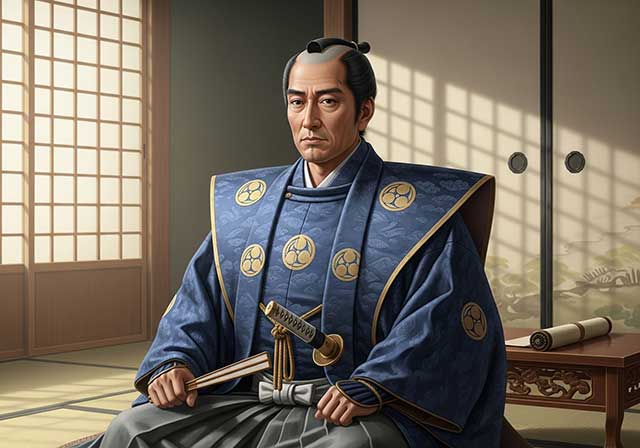
Masazumi was the eldest son of Honda Masanobu. From a young age, he served Tokugawa Ieyasu alongside his father, taking part in the affairs of the Tokugawa house and gradually gaining experience in both military and administrative matters. At the decisive Battle of Sekigahara in 1600, Masazumi was part of the core Tokugawa forces, a clear sign of the high level of trust Ieyasu placed in him. After the campaign ended, he was given a highly sensitive assignment—serving in the guard of the defeated Ishida Mitsunari, one of Tokugawa’s principal enemies—an obligation that required exceptional reliability and caution.
-
Hojo Shigetoki
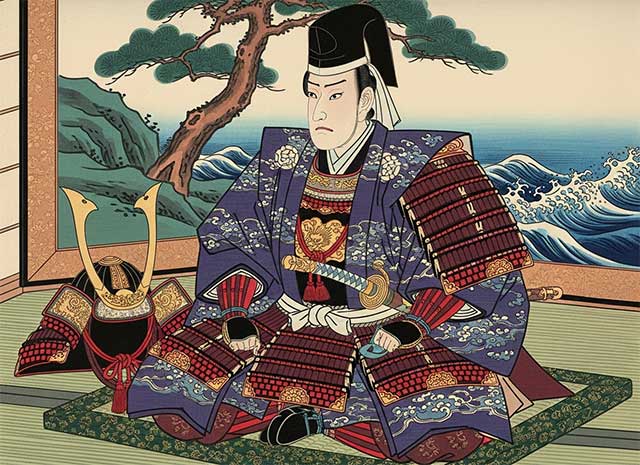
Hōjō Shigetoki, the third son of Hōjō Yoshitoki, was still very young—only five years old—when his grandfather Tokimasa became the first member of the Hōjō clan to assume the position of shogunal regent.

